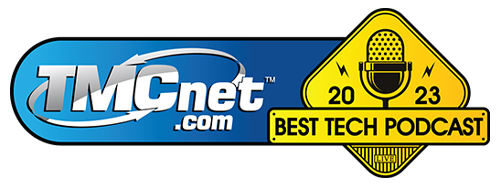EP 4: Outpace Competition by Leveraging Automated IT Processes in Microsoft Teams Calling Services
Posted on May 4, 2023 by Fusion Connect
For many businesses, multiple vendor portals, disparate IT management platforms, and indirect communication with both voice carriers and Microsoft, are the antithesis of a successful digital transformation journey.
In this week’s episode, we bring in Terry Corder, VP of Solution Engineering at Fusion Connect to discuss how automation in Microsoft Teams Calling Services streamlines and enhances IT processes to significantly reduce time to manage IT multiple environments, lower overhead costs, and ultimately improve overall client experience.
Watch & Listen
Tech UNMUTED is on YouTube
Catch up with new episodes or hear from our archive. Explore and subscribe!
Transcript for this Episode:
INTRODUCTION VOICEOVER:
This is Tech UNMUTED. The podcast of modern collaboration – where we tell the stories of how collaboration tools enable businesses to be more efficient and connected. With your hosts, George Schoenstein and Santi Cuellar. Welcome to Tech UNMUTED.
GEORGE:
Welcome to the latest episode of Tech UNMUTED. I'm your host, George Schoenstein.
SANTI:
And I'm Santi Cuellar, your co-host.
GEORGE:
Today I'm thrilled to welcome Terry Corder, Terry's the VP of Solution Engineering at Fusion Connect. Terry, why don't you tell us a little bit about your background?
TERRY:
Sure, thanks George. Thanks, Santi. I appreciate it. So, my name is Terry Corder and I've been with Fusion Connect, or one of the subsidiary companies, for 18 years now and I've been in the industry about 30. I do engineering. I've done network engineering, solution engineering all the way through the years, so it's really something I enjoy and I'm happy to be here.
GEORGE:
Awesome, with that, I'm going to turn today's podcast over to Santi.
SANTI:
Thanks, George. Well, I'm looking forward to this because every time Terry hops on a screen like this, it gets really technical and real geeky, and I like to geek out. No seriously, Terry, I really enjoy having you here today. Look, I know that you were at Enterprise Connect, which is a pretty big event recently, and you had an opportunity to present, and I caught the cliff notes of that, and it was basically around Microsoft Teams – and does some of the automation and integrations that we have done to the Teams calling services solution set. So, what I really want to do today is I want to peel that back a little bit. So why don't you just kind of walk us through how did it go at Enterprise Connect and then you know, what was that message you delivered and how was it received?
TERRY:
Sure. I appreciate it, Santi. Yeah, Enterprise Connect was great. You know, it's a wonderful show every year. It's all about allowing us to connect with our clients, with those enterprise CIO's, CTO's, directors of IT and voice. They're out there looking for the next solution to bring into their environment. They're looking for the things that will make their life easier, that will help them produce better business overall and save them costs in the long run. So, getting in front of that many individual end users is always an exciting opportunity. So, anytime we get to present at one of these shows or be at one of these shows and then also present, that just – it’s really what I look forward to.
SANTI:
Yeah, that sounds like fun. And so, you presented on this whole idea of using Teams to help streamline some processes and that's really what I want to try and unpack today. So, walk us through that.
TERRY:
Sure. So, Microsoft Teams… there have been – let's start at the beginning. There have been iterations of Microsoft Teams. Microsoft Teams started out with – they let people do voice a little bit internal. Then they opened up to a few service providers doing what they call Direct Routing and then they opened up what's called Operator Connect and that's what Fusion Connect does. We still do the other things, but Operator Connect allows a service provider like Fusion to provide the services with an SLA with Microsoft, so we're partners now. So anytime anything happens, we can address that as partners with Microsoft and get a resolution for the client. So, we go in, in that aspect and we've built out several –
we've built out a portal that gives our clients that interactive space between the Microsoft portal and their end users to be able to hold the IDs to build auto attendants, hunt groups, make them easier, do a little automation there. But then within that portal, we've opened up a set of open APIs. So, what that's done is that lets those clients use their current IT system management – all of their service management systems, and actually hook into our system so that their teams – their help desk teams, their HR teams – don't need to go learn another platform. They're able to use the platforms they're used to, day in and day out, bring on a new user, give them a new phone number, remove a user, change a phone number, move phone numbers around, things like that. So, things related to the voice infrastructure, they're able to do within their IT management system instead of having to have another set of logins for users or give them access to their Microsoft administration environment.
SANTI:
You know, let me if I understand what you just said, because there's a lot to unpack there. Say for example, I'm in an IT environment for a company and I want to be able to manage my users within the Microsoft Teams calling environment. And let's say that I use ServiceNow for example –
I'm picking one because it's, you know, it's common, it’s an IT management platform. And so, you're telling me that if I use ServiceNow on a daily basis, I can now use an API to tie into our I guess management portal and do everything within ServiceNow this is what – how I understand it.
TERRY:
That's right. So here our service portal, by the way, is MVP. It's our Microsoft Voice Portal. And within that portal, we've opened those APIs so that things like ServiceNow or whatever IT service management tool you have, can make calls and actually – not just add, but remove phone numbers and all the different things that you need to onboard someone in a voice manner.
SANTI:
That's brilliant because it removes another barrier. You know, one of the things IT guys hate to have to do is learn a whole new portal – the IT environments are full of portals.
TERRY:
That's right.
SANTI:
But you know what, you did mention our portal and I do know that maybe not everybody has an IT services management platform or maybe they don't want to add another API to their environment. I do know for a fact though, that the MVP portal of the Microsoft Voice Portal that we offer, is very intuitive. But I also know that there's quite a bit that even within that portal, helps IT environments kind of streamline stuff. Can you walk us through some of the some of the functions that we have within that portal?
TERRY:
Sure. So, when we looked at the Microsoft admin portal, there were some of the things that Microsoft didn't do because they haven't been a voice provider or a carrier like we have for decades. So, there were things like holding phone numbers in reserve, or some of those structures to build auto attendants that were still difficult in their portal. So we brought those into our portal so that we could make it easier for clients. As an example, let's say I'm a healthcare company and – I am a conglomerate. I bring on other small healthcare companies, but I want all my phone numbers to be close to the same, or a certain area I want phone numbers. So at the beginning I've bought 1000 phone numbers and I need to store those. Well with the Microsoft system, every one of those phone numbers has to be assigned to some type of a seat, and that's gonna cost a lot of money. So with our system, we actually will hold the phone numbers that you're not using today and they're available to you 24 by 7 to just sit there and wait – you run your normal business, and when you do need a number, you have all of your numbers already picked out.
SANTI:
Got it.
TERRY:
You can say – I want this number and I'm gonna assign it to this site and then I'm gonna assign these ten underneath it to the people at that site. So it really gives you that flexibility. The other cool thing is say you need to build an auto attendant. In Microsoft, there's a lot of steps to do that so what we've done, is we've put in a section where we've built out four or five common templates that are used all the time – that we find probably 80% of our clients use something similar to those. So they're able to pull up a base template – a framework – and say I want to start with something that looks like this. They click it, it brings it forward. They can do a little bit of drag and drop, make it easy and look like what they want –
SANTI:
Right.
TERRY:
…And then they publish that to Microsoft, and that's a two-way road. So we get updates from them, and we are able to send updates to Microsoft and they're within seconds. So it really does make it a much more user- friendly and focused portal and lets them do some things that Microsoft maybe didn't focus on because they're not a voice carrier.
SANTI:
Sure, it's not their line of business and honestly, these things you just mentioned, they're not small things. These are big deals for IT environments, right? I mean, this is a huge time saver. You know, one of the things that I know we designed, and we make sure we tout loudly because it's a big differentiator, but I really want to peel that back further to is – our approach to failover, right? So our approach to failover – and now the one I don't want to oversimplify this – but we're not simply just forwarding this thing to some other number. Right? There're things that are happening behind the scenes and there's capabilities that we can enable for what I would consider probably a true failover experience. But I’d really like to hear you kind of peel that back for me a little bit.
TERRY:
Sure. So with the failover aspect of it – business continuity, I like to call – is the thing about that is, because we're the carrier, we are providing the dialing to Microsoft, so when a call is being placed through Microsoft Teams, if we are your provider, we are doing all of that call routing. So we have our own carrier grade equipment that is taking those calls and it's either sending it to Microsoft or sending it out to the rest of the world. So because we're doing that routing the minute that something happens, if Microsoft Teams is non-responsive, we are aware of that and instead of us forwarding it to another phone number, we actually have the ability to route that call and deliver it to a completely separate platform. So we can deliver it to one of our other voice platforms. We can have auto attendants built up to answer those calls temporarily – a disaster recovery auto attendant. We can have it go to an emergency phone. So I have a client that's a bank and they have several locations. They wanted to go to Microsoft Teams, but they wanted that business continuity. So we had a separate platform that we put an individual phone on behind the teller stations on that counter. And they know if Microsoft Teams were to go down, which it's more and more reliable, it's very solid structure –
SANTI:
It is.
TERRY:
…But if it happened, they've got that phone, they can still receive phone calls and the really neat thing is they can also place outbound calls on that phone and it's still coming from their normal phone number. So it's the exact same phone number that delivers to Teams. So if you're calling your clients, it doesn't look like you're calling them from some other number, or they don't get your cell number or a different phone number –
SANTI:
Right. Correct.
TERRY:
…They've got your normal phone number, so it really is a big benefit there and it gives them that peace of mind.
SANTI:
Yeah, that's awesome. See, I love hearing stuff like this. I love hearing how we streamline stuff. And now with all this talk about AI being infused into Microsoft Teams it only gets better, right? Like I can tell you, it's Terry.
TERRY:
Oh, it does.
SANTI:
Yeah, I could tell you, Terry internally, like in the marketing team, there's a few things we've done within Teams. So this is not like we're using some of the platform we're doing in Teams. But, you know, we use Teams to go out – there's an AI that goes out and it does research for us on a daily basis, and returns tech articles that are of interest, so we can repurpose it, write about or just stay up to speed on what's happening, right? We have another AI module, again built into Teams, that can read a business card from an event. So let's say that we were at that Enterprise Connect and we got a bunch of business cards, right? Teams can take this information in; the AI reads it and it drops it right into our CRM.
TERRY:
It's really neat.
SANTI:
You know, stuff like that, yeah.
TERRY:
I yeah, I tell clients I said, I've told clients many times I've talked about it at Enterprise Connect. If you look at the numbers from Microsoft last year, they had about 320 million people that already have invested in Microsoft Teams and you know that's an investment that's not going to go away and they can save real money using that Teams infrastructure that they've already put in and augmenting it with a voice carrier like us instead of paying for a full separate voice system. Right now, there's only about 12 million companies out of that 320 million that are doing that. So that's a large, captured audience that Microsoft's going to want to build towards. So they're going to continue to augment and give us these AI features –
SANTI:
That’s right.
TERRY:
…And more features in Microsoft Teams because they want more people on that. So it's a great time to join in, to hop on the train and ride it along as a business owner, because you're going to get all of those advancements along the way. So it's really an exciting time and it's something I really look forward to bringing to clients and using ourselves, the Microsoft Teams infrastructure.
SANTI:
Well, Terry, let me tell you, I am all in. I am on that train. I can't wait to see what else Microsoft comes up with. But listen, I could keep talking for a long time, and so we're going to wrap this up. Folks, thank you for joining us today. Terry, thanks for being with us and giving us your insight. If you want to continue to receive alerts on our next episodes, then go ahead and subscribe to our podcast on your favorite podcast platform, Tech UNMUTED. And if you want the notes for today's show, just go to fusionconnect.com/techunmuted to get a list, a detailed list of all the notes and the comments that were mentioned here today. Folks, we are out of time. This brings our podcast to an end. Terry, thank you and I look forward to having you again.
TERRY:
Thank you. I'd love to be here. Thanks.
SANTI:
Take care till next time. Stay connected.
CLOSING VOICEOVER:
Visit www.fusionconnect.com/techunmuted for show notes and more episodes. Thanks for listening.
Episode Credits:
Produced by: Fusion Connect
Listen on Your Favorite Podcast Player:


Expert insights, exclusive content, and the latest updates on Microsoft products and services - direct to your inbox. Subscribe to Tech ROUNDUP!
Tech UNMUTED, the podcast of modern collaboration, where we tell the stories of how collaboration tools enable businesses to be more efficient and connected. Humans have collaborated since the beginning of time – we’re wired to work together to solve complex problems, brainstorm novel solutions and build a connected community. On Tech UNMUTED, we’ll cover the latest industry trends and dive into real-world examples of how technology is inspiring businesses and communities to be more efficient and connected. Tune in to learn how today's table-stakes technologies are fostering a collaborative culture, serving as the anchor for exceptional customer service.
Tech UNMUTED is a production of Fusion Connect, LLC.

 Amazon Music
Amazon Music Podcast Index
Podcast Index TuneIn
TuneIn Listen Notes
Listen Notes